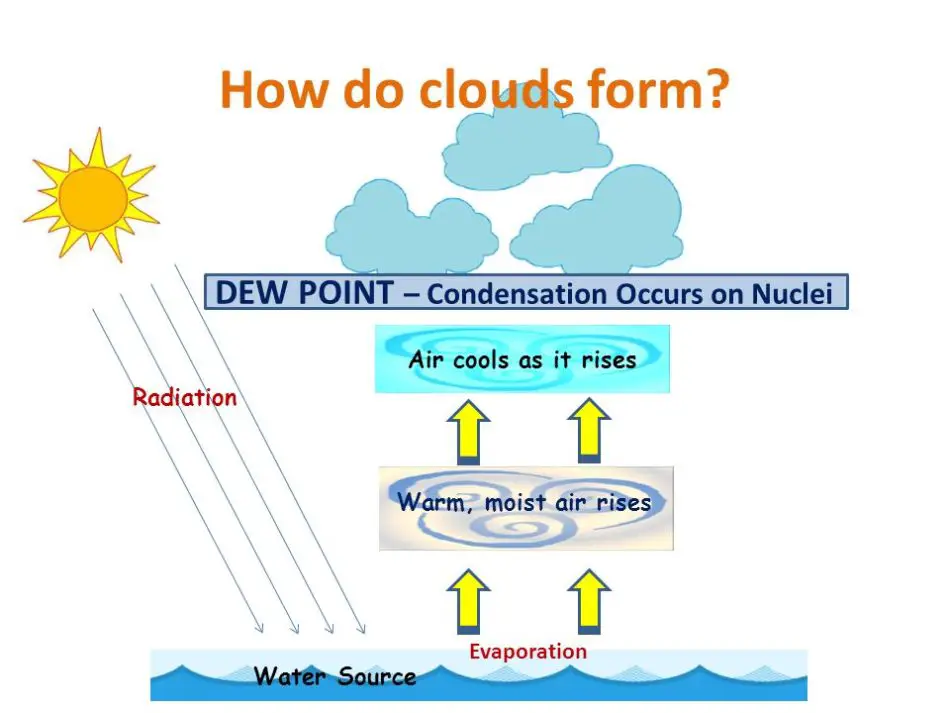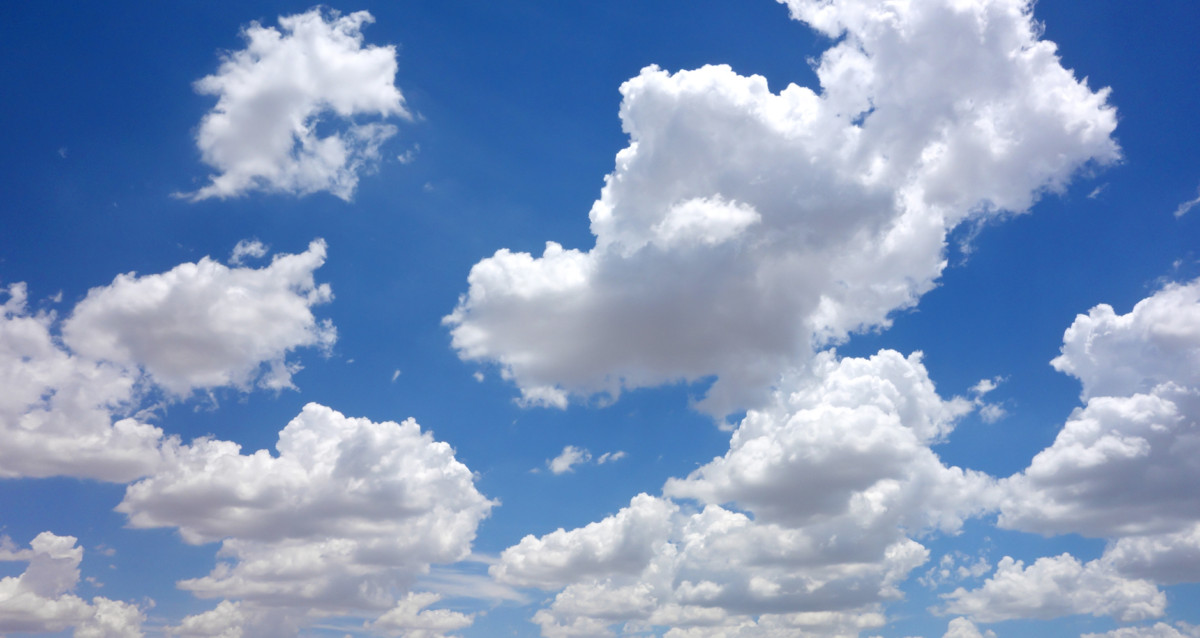Besides looking pretty and turning into rain, Clouds have other functions and benefits, that they perform every day and without these natural functions occurring could cause problems for us, earthlings, down on the earth below. Why are clouds important?
Clouds:
- Cool earth-reflecting sun’s heat to space
- Warm earth-absorbing sun’s heat on earth
- Hold Water Vapor & transpiration in the Water Cycle
- Supply H2O as condensation & precipitation
- Balance & regulate Earth’s temperature
- Shift dust & bacteria on earth
- Absorb Solar Radiation
- Keeps Global Warming in check
Clouds generally form within the troposphere or the layer of atmosphere closest to the earth. As they rise and fall, they may appear in infinite variations. Upper Clouds are highest at 10,000 to 60,000 feet then there are Mid-Level Clouds then there are the Lowest Clouds that hang around 6,500 feet above the earth.
Introduction:
Clouds are one of the most captivating and ever-present features of the Earth’s atmosphere. Serving as both a source of wonder and a key component of the planet’s climate system, clouds play multifaceted roles in shaping weather patterns, distributing precipitation, and regulating temperature. Understanding the significance of clouds is essential for comprehending the intricate dynamics of Earth’s climate and weather.
Why Are Clouds Important
Clouds play a crucial role in Earth’s climate by regulating temperature. They reflect sunlight, helping to cool the planet’s surface.
Additionally, clouds are integral to the water cycle, as they transport and distribute water across different regions through precipitation. Cloud cover can also affect weather patterns, influencing rainfall and drought conditions. Furthermore, clouds contribute to the aesthetic beauty of the sky, inspiring artists and poets alike.
 A cloud consists of water drops or ice crystals floating in the sky. There are many kinds of clouds. Clouds are an important part of Earth’s weather.
A cloud consists of water drops or ice crystals floating in the sky. There are many kinds of clouds. Clouds are an important part of Earth’s weather.
The sky can be full of water. But most of the time you won’t be able to see the water. The drops of water are too small to see. They have turned into a gas called water vapor.
As the water vapor goes higher in the sky, the air gets cooler. The cooler air causes the water droplets to start to stick to things like bits of dust, ice, or sea salt.
Dust and other particles floating in the air provide surfaces for water vapor to turn into water drops or ice crystals. The tiny drops of water condense on the particles to form cloud droplets. Clouds are made up of a bunch of cloud droplets bundled together with raindrops. There are a few reasons clouds float first, the droplets in a cloud are small. Very small.
A water droplet in a cloud may only be 20 micrometers across. That is half as wide as a typical human hair and about the same size across as a particle of dust
Even though dust is heavier than the air around it, a dust particle is so small that it can float in the air for a long time before falling. Water droplets in the air behave the same way as dust.
Liquid water here on Earth is constantly changed into an invisible gas called water vapor and drifts away into the atmosphere. Notice that evaporated contains the word vapor. Water from oceans, lakes, rivers, swamps, swimming pools, and everywhere water comes in contact with air will evaporate and enter the sky as water vapor.
Clouds Play an Important Role in Climate
Liquid water changes into a gas when water molecules get extra energy from a heat source such as the Sun or other water molecules running into them. These energetic molecules then escape from the liquid water in the form of gas. In the process of changing from liquid to gas, the molecules absorb heat, which they carry with them into the atmosphere. That cools the water they leave behind.
The air can only hold a certain amount of water vapor which depends on the temperature and weight of the air or atmospheric pressure in a given area. The higher the temperature or atmospheric pressure, the more water vapor the air can hold. When a certain volume of air is holding all the water vapor it can hold, it is said to be “saturated.”
What happens if a saturated volume of air cools or the atmospheric pressure drops? The air is no longer able to hold all that water vapor:
- The excess amount changes from a gas into a liquid or solid (ice). The process of water changing from a gas to a liquid is called “condensation,”
- When a gas changes directly into a solid, it is called “deposition.” These two processes are how clouds form.
The Science of Cloud Observations
Clouds develop and occupy different parts of the sky. Some clouds are extremely high while other clouds are very low in the sky touching the ground. They are called Fog. Clouds are also named according to their shape.
Cumulus clouds are middle clouds. These clouds look like giant cotton balls in the sky.
Cirrus clouds are higher Clouds are either cirrus, cirrostratus, or cirrocumulus. Cirrus clouds are made of ice crystals and appear thin, white, and wispy. Cirrostratus clouds are whitish and transparent and tend to blanket the whole sky, sometimes creating a halo effect around the sun or moon.
Stratus clouds are low clouds. They cover the sky like bedsheets are heavy and dense; they tend to build dramatically upward and are often harbingers of thunderstorms, hail, or tornadoes. Stratus clouds appear as a thin gray layer in the sky. Stratocumulus clouds are patchy, gray, and white, and usually resemble a honeycomb. Why are there Clouds?
California and Australian fires, where man-made weather modification using Cloud Seeding is being used are increasingly becoming more volatile leading to some speculation about whether a chemical ingredient being used in Cloud Seeding called Aluminum Oxide may be contributing to the problem. Read our article at MyWaterEarth&Sky called Is Aluminum Oxide Flammable
Clouds In the Water Cycle
 Weather takes place in the layer of the atmosphere closest to the Earth. These changes are all dependent on Humidity, Air Temperature, Air Pressure, and Humidity. During the course of the day water on earth is changed to water vapor and moves towards the sky. The sun provides the energy for this water cycle to happen which is called evaporation which changes water from liquid to gas called Condensation.
Weather takes place in the layer of the atmosphere closest to the Earth. These changes are all dependent on Humidity, Air Temperature, Air Pressure, and Humidity. During the course of the day water on earth is changed to water vapor and moves towards the sky. The sun provides the energy for this water cycle to happen which is called evaporation which changes water from liquid to gas called Condensation.
The earth’s atmosphere is where the mixtures of all gases collect from the earth. In the atmosphere, the air cools down and forms Clouds. At most times 3/5 of the Earth’s atmosphere is covered by clouds. When the water vapor builds up and turns to condensation or clouds keep building up and gaining weight then the Water Cycle ends with Precipitation or Rain. We all know that Clouds make Rain but what else do Clouds do for us people down here on Earth?
Condensation and Transpiration that release moisture from plants and trees around the world are important elements to the Water Cycle because it is responsible for the formation of clouds. These clouds may produce precipitation, which is the primary route for water to return to the Earth’s surface within the water cycle. Condensation is the opposite of evaporation.
Have you ever wondered how the weather can change as quickly as it does? By the time it takes to put a cover on a baseball field because of a rain delay, it’s time to take it off and play ball again. Read my article called What Causes the Constant Changes in Weather
Earth Without Clouds
Clouds have many effects on our climate besides snow and rain. For example:
- Clouds- serve as barriers to heat moving both in and out of the Earth’s atmosphere. Clouds generally affect the temperature in two ways. Over the surface of the planet, clouds reflect or block about 20% of the incoming heat back into space. Clouds, water vapor, and other atmospheric gasses also absorb about 20% of this incoming solar radiation.
- Low-level clouds reflect the greatest amount of heat, which is why we get cooler temperatures during a cloudy day. Conversely, a cloudy night is warmer than a cloudless night because clouds also create a blanketing effect. Clouds partially absorb outgoing heat (such as the heat released in the evenings, as the ground cools) and reradiate a portion of that heat back towards the Earth’s surface. High-level clouds typically absorb this outgoing heat. Both these processes help regulate and keep Global Warming in check.
- Clouds regularly help shift dust, bacteria, and other particles throughout the planet’s surface. Clouds carry dust at a rate much faster than you might think. One estimate puts the amount of dust moving from Africa to a portion of the Amazon basin in South America at about 13 million tons annually. It is thought that regions that have too much dust in the air suffer from less rainfall.
If atmospheric carbon dioxide (CO2) levels triple an unlikely, but not implausible scenario given past rates of human emissions—these Stratocumulus clouds could vanish in a frightening feedback loop. Fewer cooling clouds would mean a warmer Earth, which in turn would mean fewer clouds, leading to an 8°C jump in warming a staggering, world-altering change.
Stratocumulus Clouds are the most common type of cloud type and more of them cover the Earth’s surface than any other Cloud type. They keep the earth and oceans cool by shading us underneath them bouncing sunlight back up into space away from the planet. They release and absorb moisture in a special way that should never be disturbed. They are a part of science that is very much dependent on but very hard to predict.
The amount of man-made CO2 in the atmosphere can affect the working of this natural process creating more problems eventually for Global Warming. The extra CO2 gases could break up the Stratocumulus layer of clouds and offset the cooling effect and raise the temperatures higher than they expected.
Within the next half-century or so an accumulation of airborne pollutants notably carbon dioxide (CO2), methane (CH4), nitrous oxides (NOx), and chlorofluorocarbons (CFCs) — will very likely cause noticeable changes in climate changes may have already occurred but there is debate about that.
Because these so-called greenhouse gases retard the flow of heat radiation from the surface into space, the whole earth will get warmer This is called the Greenhouse effect. The earth surface is covered with water clouds that are key and major in their role in climate sensitivity, climate change, and the science of weather around the globe.
- They are reservoirs of liquid water that will eventually return to the earth as precipitation
- Clouds are an essential part of the water cycle
- They can both shade the earth and trap heat
- Clouds are required for precipitation to occur
- They are essential for forecasting weather conditions
The history of the government trying to manipulate the weather has been around from the beginning of time. In earlier times, in America, when superstition ruled in matters of the unknown, Man used magic in his efforts to create rain. Today Stories of our Government manipulating the weather are speculated by pretty convincing dudes with lots of evidence. But Can The Government Make it Rain? Read my article on MyWaterEarth&Sky called Can The Government Make It Rain
Conclusion:
In conclusion, clouds are not just ethereal formations adorning the sky; they are essential components of Earth’s climate system. Their impact on temperature regulation, precipitation distribution, and weather patterns underscores their importance in maintaining the delicate balance of our planet’s environment. As we continue to study and appreciate the role of clouds, we gain valuable insights into the complex interplay of factors shaping our world’s climate and weather.
JimGalloway Author/Editor
References:
International Climate Cloud Climatology Project
NASA –Clouds and how they are formed
Q: What are clouds made of? A: Clouds are primarily composed of tiny water droplets or ice crystals suspended in the atmosphere. These droplets form when water vapor condenses onto microscopic particles, such as dust or salt, in the air.
Q: How do clouds form? A: Cloud formation typically occurs when air containing water vapor rises, cools, and reaches its dew point—the temperature at which water vapor condenses into liquid droplets. This process can be triggered by various factors, including air mass convergence, frontal lifting, orographic lifting (caused by terrain), and convection.
Q: Why are clouds white? A: Clouds appear white because they reflect sunlight across the entire visible spectrum. The tiny water droplets or ice crystals in clouds scatter sunlight in all directions, making them appear white to an observer on the ground.
Q: Do clouds produce rain? A: Yes, clouds can produce rain through a process called precipitation. When water droplets in clouds grow large enough, they fall to the ground as raindrops. Other forms of precipitation, such as snow, sleet, or hail, can also occur depending on the atmospheric conditions within the cloud.
Q: How do clouds affect climate? A: Clouds have a significant impact on Earth’s climate by influencing the planet’s energy balance. They reflect sunlight back into space, which helps cool the Earth’s surface. However, they also trap heat emitted by the Earth, contributing to the greenhouse effect. The net effect of clouds on climate depends on various factors, including their type, altitude, and coverage.
Q: Can clouds predict weather? A: Yes, cloud patterns can provide valuable clues about upcoming weather conditions. For example, certain types of clouds, such as cumulonimbus clouds, are associated with thunderstorms and heavy rainfall. Meteorologists use cloud observations along with other data to forecast weather patterns and predict precipitation.


